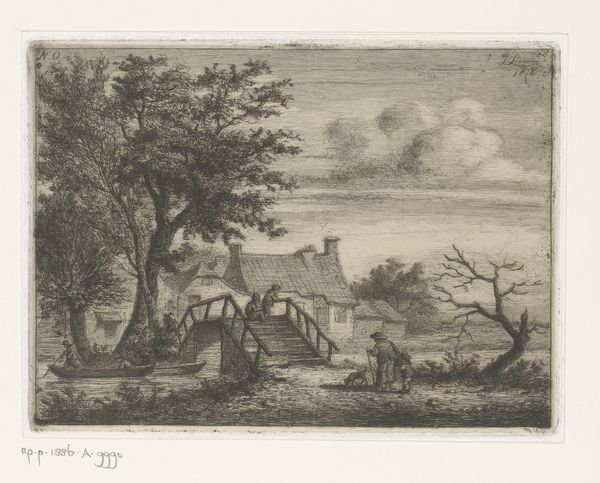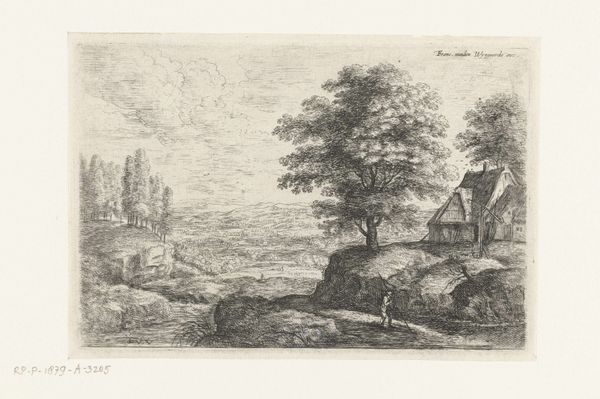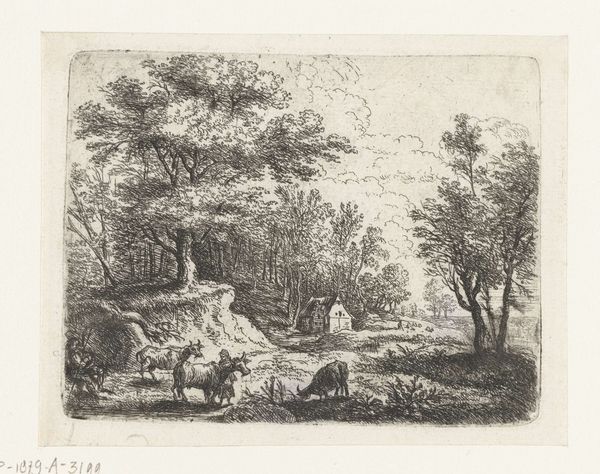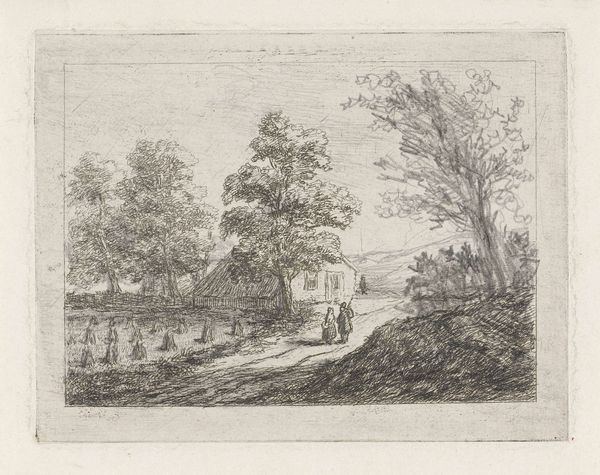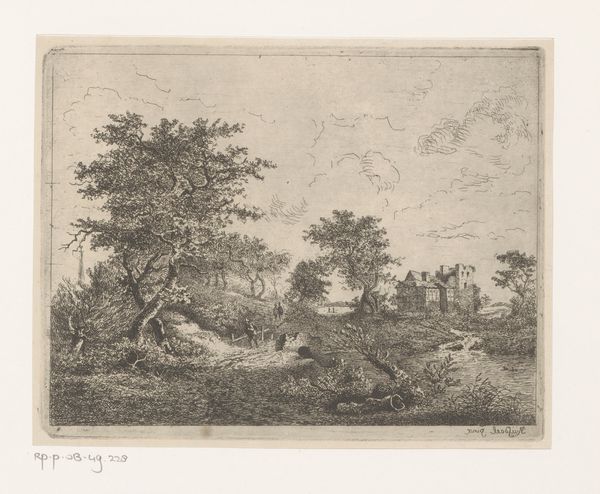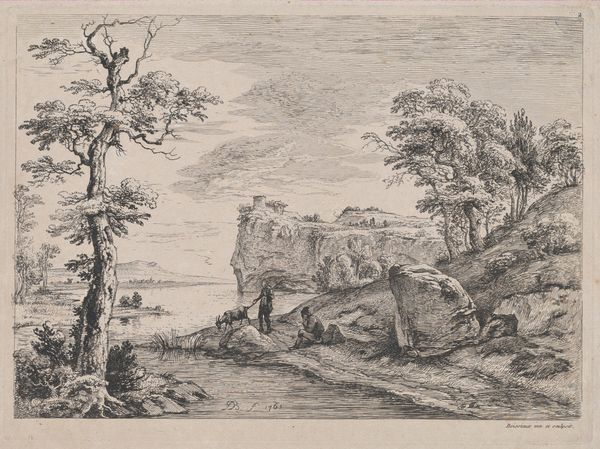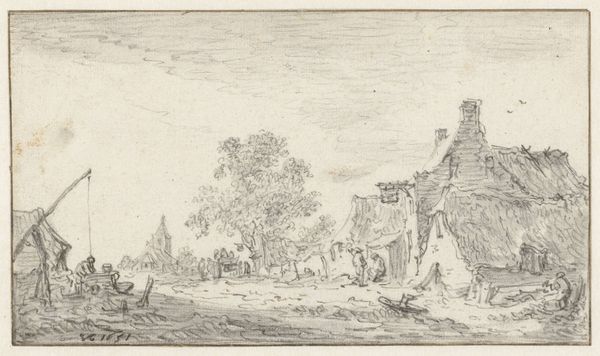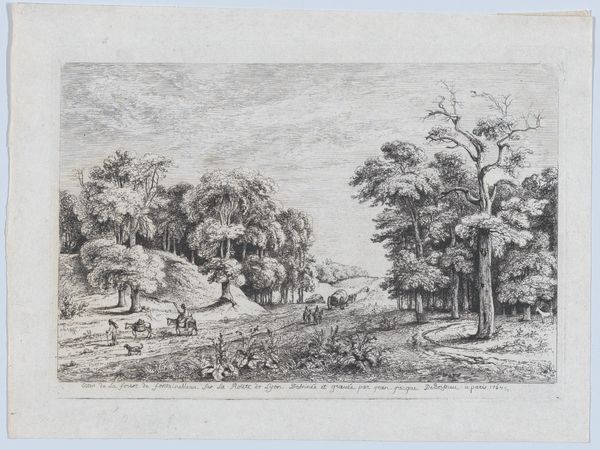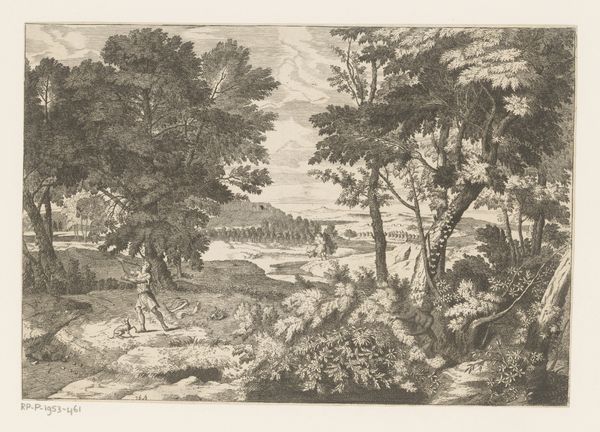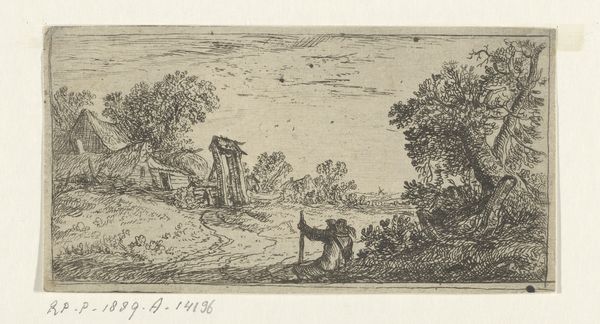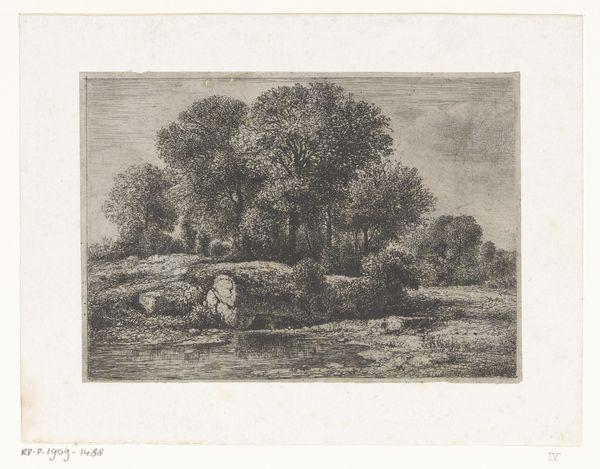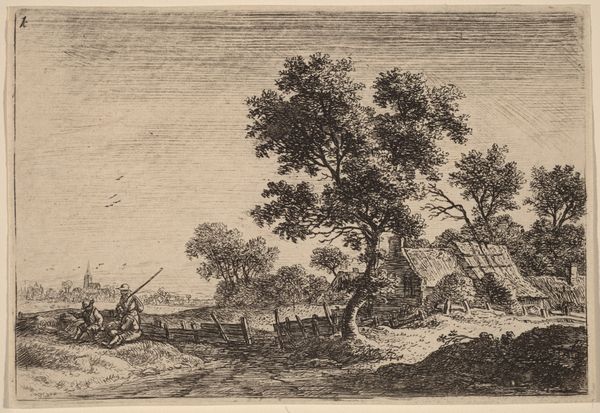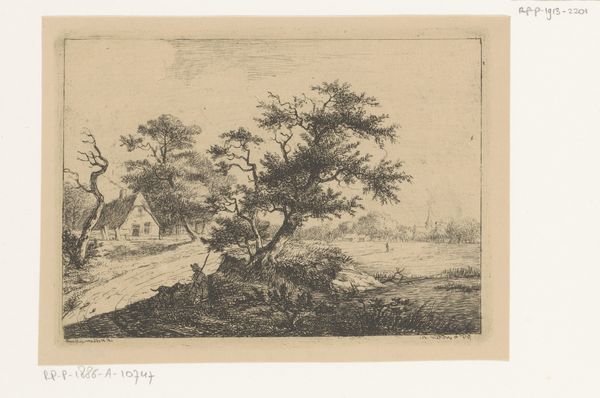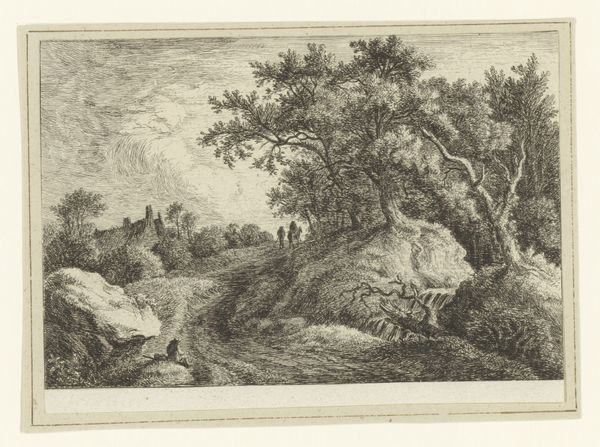
print, etching
# print
#
etching
#
landscape
#
genre-painting
#
realism
Dimensions: height 148 mm, width 198 mm
Copyright: Rijks Museum: Open Domain
Jean Théodore Joseph Linnig created this landscape with a wooden bridge using etching, a printmaking technique, during the 19th century. Etching involves using acid to cut into a metal plate, traditionally copper or zinc, to create a design. The plate is covered with a waxy, acid-resistant ground, and the artist scratches the design into this ground, exposing the metal beneath. When the plate is immersed in acid, the exposed metal is eaten away, creating incised lines. The depth and width of these lines can be controlled by varying the strength of the acid and the duration of the immersion, allowing for a range of tones and textures in the final print. The image we see is a direct result of this process. The fine lines and subtle gradations of tone are characteristic of etching, giving the landscape a delicate, almost ethereal quality. The amount of work that goes into creating a scene like this is considerable, and speaks to a skilled tradition of aesthetics. Through his labor, Linnig elevates this rural scene from the everyday to the artful.
Comments
No comments
Be the first to comment and join the conversation on the ultimate creative platform.
